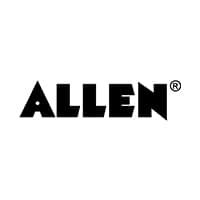NEET/JEE Coaching Scholarship
Get up to 90% Scholarship on Offline NEET/JEE coaching from top Institutes
PSEB 12th Exams 2025 - The Punjab School Education Board (PSEB) conducts the PSEB 12th board exams in the state every year. The Punjab board conducted the intermediate exams from February 19 to April 4, 2025. Students pursuing full-time or private Class 12th in a school affiliated with PSEB can appear for the Punjab Board 12th exams. The application forms are made available through the respective schools. Every year, around 3 lakh students appear in the PSEB 12th exams. After successfully qualifying for the exams, students can pursue undergraduate courses as per their stream and interest.
More About PSEB Class 12th Exams 2025:
| Full Exam Name | Punjab Board of Secondary Education 12th Examination |
| Short Exam Name | PSEB 12th |
| Conducting Body | Punjab School Education Board |
| Frequency Of Conduct | Once a year |
| Exam Level | Intermediate |
| Languages | Arabic +10 more |
| Mode Of Application | online |
| Application Fee | Online : 1500 |
| Mode Of Exam | offline |
| Exam Duration | 3 Hours |
PSEB 12th Punjab Board of Secondary Education 12th Examination (session 2025)
Read More
Punjab Board determines the eligibility criteria to apply for PSEB 12th exams 2025. Students should follow the given eligibility criteria before filling out the forms.

Discover the top 50 B.Tech colleges in Punjab with details on rankings, courses, fees, and entrance exams in this comprehensive e-book.
Download EBookAccording to the examination pattern of the PSEB 12th exams 2025, there are four compulsory subjects. Out of which, the examination for Environmental Education and Computer Science will be conducted at the school level only.
The minimum PSEB passing marks 2025 in the 12th exams is 33 marks. The marks division for the theory exam, practical exam and internal assessment are listed below.
1) Compulsory subjects mark distribution
| Subject | Theory Marks | Practical Marks | CCE Marks | Total Marks | Min. Pass Marks |
| General English | 65 | - | 10 | 75 | 25 |
| General Punjabi/ Punjab History and Culture | 65 | - | 10 | 75 | 25 |
| Environmental Education | 45 | - | 5 | 50 | 17 |
| Computer Science | 50 | 40 | 10 | 100 | 33 |
2) Exam Pattern for Elective Subjects
In addition to compulsory subjects, students need to opt for elective subjects from a group of the following subjects:
3) Students might also opt for one additional subject in addition to three elective subjects from groups of science, humanities or agriculture.
Accountancy-II: Unit 01
Accountancy-II: Unit 02
Accountancy-II: Unit 03
Accountancy-II: Unit 04
Accountancy-II: Unit 05
Accountancy-II: Unit 06
Accountancy-II: Unit 07
Accountancy-II: Unit 08
Accountancy-II: Unit 09
Accountancy-II: Unit 10
Accountancy-II: Unit 11
Accountancy-II: Unit 12
Accountancy-II: Unit 13
Accountancy-II: Unit 14
Business studies-II (Part-A-principles and functions of management): Unit 01
Business studies-II (Part-A-principles and functions of management): Unit 02
Business studies-II (Part-A-principles and functions of management): Unit 03
Business studies-II (Part-A-principles and functions of management): Unit 04
Business studies-II (Part-A-principles and functions of management): Unit 05
Business studies-II (Part-A-principles and functions of management): Unit 06
Business studies-II (Part-A-principles and functions of management): Unit 07
Business studies-II (Part-A-principles and functions of management): Unit 08
Business studies-II (Part-A-principles and functions of management): Unit 09
Business studies-II (Part-B-business finance and marketing): Unit 01
Business studies-II (Part-B-business finance and marketing): Unit 02
Business studies-II (Part-B-business finance and marketing): Unit 03
Business studies-II (Part-B-business finance and marketing): Unit 04
Economics (Part-A-introductory macroeconomics): Unit 01
Economics (Part-A-introductory macroeconomics): Unit 02
Economics (Part-A-introductory macroeconomics): Unit 03
Economics (Part-A-introductory macroeconomics): Unit 04
Economics (Part-A-introductory macroeconomics): Unit 05
Economics (Part-B-Indian economic development): Unit 01
Economics (Part-B-Indian economic development): Unit 02
Economics (Part-C-statistics in economics): Unit 01
Biology: Unit 01
Biology: Unit 02
Biology: Unit 03
Biology: Unit 04
Biology: Unit 05
Chemistry: Unit 01
Chemistry: Unit 02
Chemistry: Unit 03
Chemistry: Unit 04
Chemistry: Unit 05
Chemistry: Unit 06
Chemistry: Unit 07
Chemistry: Unit 08
Chemistry: Unit 09
Chemistry: Unit 10
Chemistry: Unit 11
Chemistry: Unit 12
Chemistry: Unit 13
Chemistry: Unit 14
Chemistry: Unit 15
Chemistry: Unit 16
Physics: Unit 01
Physics: Unit 02
Physics: Unit 03
Physics: Unit 04
Physics: Unit 05
Physics: Unit 06
Physics: Unit 07
Physics: Unit 08
Physics: Unit 09
Mathematics: Unit 01
Mathematics: Unit 02
Mathematics: Unit 03
Mathematics: Unit 04
Mathematics: Unit 05
Mathematics: Unit 06
Geography: Unit 01
Geography: Unit 02
Geography: Unit 03
Geography: Unit 04
Geography: Unit 05
Political science (Part-A-political theories): Unit 01
Political science (Part-A-political theories): Unit 02
Political science (Part-A-political theories): Unit 03
Political science (Part-A-political theories): Unit 04
Political science (Part-A-political theories): Unit 05
Political science (Part-A-political theories): Unit 06
Political science (Part-B-Indian political system): Unit 01
Political science (Part-B-Indian political system): Unit 02
Political science (Part-B-Indian political system): Unit 03
Political science (Part-B-Indian political system): Unit 04
Political science (Part-B-Indian political system): Unit 05
Political science (Part-B-Indian political system): Unit 06
Political science (Part-B-Indian political system): Unit 07
Philosophy: Unit 01
Philosophy: Unit 02
Philosophy: Unit 03
Philosophy: Unit 04
Media studies: Unit 01
Media studies: Unit 02
Home science (Part-A-food and nutrition): Unit 01
Home science (Part-A-food and nutrition): Unit 02
Home science (Part-A-food and nutrition): Unit 03
Home science (Part-A-food and nutrition): Unit 04
Home science (Part-A-food and nutrition): Unit 05
Home science (Part-A-food and nutrition): Unit 06
Home science (Part-B-human development): Unit 01
Home science (Part-B-human development): Unit 02
Home science (Part-B-human development): Unit 03
Home science (Part-B-human development): Unit 04
Home science (Part-B-human development): Unit 05
Home science (Part-B-human development): Unit 06
Environmental education: Unit 01
Environmental education: Unit 02
Environmental education: Unit 03
Environmental education: Unit 04
Environmental education: Unit 05
Computer application: Unit 01
Computer application: Unit 02
Computer application: Unit 03
Computer application: Unit 04
Computer application: Unit 05
Computer application: Unit 06
Computer application: Unit 07
Computer application: Unit 08
Computer application: Unit 09
Psychology: Unit 01
Psychology: Unit 02
Psychology: Unit 03
Psychology: Unit 04
Psychology: Unit 05
Psychology: Unit 06
Psychology: Unit 07
Psychology: Unit 08
Public administration: Unit 01
Public administration: Unit 02
Public administration: Unit 03
Public administration: Unit 05
Public administration: Unit 06
Public administration: Unit 07
Public administration: Unit 08
Sociology: Unit 01
Sociology: Unit 02
Sociology: Unit 03
Sociology: Unit 04
Music (dance): Unit 02
Music (dance): Unit 09
Music (dance): Unit 10
Music (Instrumental): Unit 04
Music (Instrumental): Unit 06
Music (Instrumental): Unit 08
Music (Instrumental): Unit 10
Music (Instrumental): Unit 12
Music (Tabla): Unit 01
Music (Tabla): Unit 08
Music (Tabla): Unit 09
Music (Tabla): Unit 10
Music (Tabla): Unit 11
Music (vocal): Unit 04
Music (vocal): Unit 06
Music (vocal): Unit 08
Music (vocal): Unit 10
Music (vocal): Unit 12
Music (vocal): Unit 13
Gurmat sangeet: Unit 04
Gurmat sangeet: Unit 06
Gurmat sangeet: Unit 07
Gurmat sangeet: Unit 09
Gurmat sangeet: Unit 10
Fundamental of E-business: Unit 01
Fundamental of E-business: Unit 02
Fundamental of E-business: Unit 04
Fundamental of E-business: Unit 05
Fundamental of E-business: Unit 06
Fundamental of E-business: Unit 07
Fundamental of E-business: Unit 08
Fundamental of E-business: Unit 09
Fundamental of E-business: Unit 10
Defence studies: Unit 01
Defence studies: Unit 02
Defence studies: Unit 03
Defence studies: Unit 04
Defence studies: Unit 05
Defence studies: Unit 06
Religion: Unit 01
Religion: Unit 02
National cadet corps (common subjects): Unit 01
National cadet corps (common subjects): Unit 02
National cadet corps (common subjects): Unit 03
National cadet corps (common subjects): Unit 04
National cadet corps (common subjects): Unit 05
National cadet corps (common subjects): Unit 06
National cadet corps (common subjects): Unit 07
National cadet corps (common subjects): Unit 08
National cadet corps (common subjects): Unit 10
National cadet corps (specialized subject: Army): Unit 01
National cadet corps (specialized subject: Army): Unit 02
National cadet corps (specialized subject: Army): Unit 03
National cadet corps (specialized subject: Army): Unit 04
National cadet corps (specialized subject: Army): Unit 05
National cadet corps (specialized subject: Army): Unit 06
National cadet corps (specialized subject: Air Force): Unit 01
National cadet corps (specialized subject: Air Force): Unit 02
National cadet corps (specialized subject: Air Force): Unit 04
National cadet corps (specialized subject: Air Force): Unit 07
National cadet corps (specialized subject: Air Force): Unit 08
National cadet corps (specialized subject: Air Force): Unit 09
National cadet corps (specialized subject: Navy): Unit 01
National cadet corps (specialized subject: Navy): Unit 02
National cadet corps (specialized subject: Navy): Unit 04
National cadet corps (specialized subject: Navy): Unit 05
National cadet corps (specialized subject: Navy): Unit 06
National cadet corps (specialized subject: Navy): Unit 07
English (elective): Unit 01
English (elective): Unit 02
English (elective): Unit 03
English (elective): Unit 07
General English: Unit 02
General English: Unit 03
General English: Unit 04
General English: Unit 05
General English: Unit 06
General English: Unit 07
Punjab history and culture: Unit 08
Punjab history and culture: Unit 10
While preparing for the PSEB 12th exam 2025, students must practice previous years' question papers and model test papers to know the exam pattern, marking scheme and typology of questions.
These PSEB 12th model test papers also help students to analyze their performance and prepare accordingly. One should try to solve these papers in the stipulated time as it will develop time management skills.
Students can follow the given tips while preparing for the PSEB 12th exam 2025 -
Also, read
The Punjab School Education Board has declared the PSEB 12th result on May 14, 2025. Students need to enter their roll number to view the scores obtained in the PSEB 12th exam 2025. The result of the Punjab Board 12th exam 2025 contains the student's name, roll number, subjects, marks obtained in theory and practical, and total marks.
Steps to check PSEB 12th Result 2025
01725227423 + 2 more
As per latest 2024 syllabus. Maths formulas, equations, & theorems of class 11 & 12th chapters
There is no such a provision to apply for the change of exam centre as the centre is allotted as per preferences filled in the form.
PSEB Class 12 exams were held from February 19 to April 4, 2025.
Yes, you can opt for additional subjects in PSEB 12th while filling the form.
Only private students can download PSEB 12th admit card 2025 from the official website and regular students can collect the same from respective schools.
Individual students can apply for PSEB 12th open school exams in online mode as private students.
Yes, you can improve your 12th class marks while pursuing a BA, but the feasibility depends on the regulations of the educational boards and institutions involved. Here are the general steps you can follow:
1. **Check Eligibility**: Confirm with the education board (e.g., CBSE, ISC, State Boards) if they allow improvement exams for 12th-grade subjects while you are enrolled in a BA program. Most boards allow students to take improvement exams to enhance their scores in specific subjects.
2. **Application Process**: Apply for the improvement exams through the official board website or your previous school. You will need to fill out an application form and pay the required fees.
3. **Scheduling**: Ensure the exam dates do not clash with your BA course schedule. Improvement exams are typically held during a specific period, so plan your studies accordingly.
4. **Preparation**: Allocate sufficient time for preparation. Balancing BA studies and 12th-grade improvement exams requires effective time management.
5. **Attend Exams**: Appear for the improvement exams as scheduled. Perform well to achieve better scores.
6. **Submission of Improved Marks**: Once you receive your improved marks, update your academic records. These improved scores can be beneficial for future educational or career opportunities.
Consult with your current BA institution and the relevant education board to ensure compliance with all rules and procedures.
To know whether you're in the top 20 percentage of 2024 PSEB exam or not, you can check out the PSEB toppers list and merit list which is published along with the PSEB result .
I am not sure of which college you're talking about but you've got pretty good scores in 12th boards and there is a high chance of getting admissions in many of the government colleges of India if they are taking admissions based on merit.
As for your good, i will suggest you to give CUET exam and by scoring good in that exam you can easily get admission in some of the top universities in India like Delhi University, BHU, Aligarh University , and many more.
Dear candidates,
To check PSEB senior secondary examination result at pseb.ac.in, click on the download 'result link'. Enter registration number, roll number. The results will appear on the screen. Download it,
hope this helps!!
All the Best!!
Hello Aspirant,
PSEB class 12th exam has been postponed. Kindly stay tuned with the official website or Careers360 to get the updated information.
https://school.careers360.com/exams/pseb-12th
Good Luck!

Register for ALLEN Scholarship Test & get up to 90% Scholarship

Get up to 90% Scholarship on Offline NEET/JEE coaching from top Institutes

This ebook serves as a valuable study guide for NEET 2025 exam.

This e-book offers NEET PYQ and serves as an indispensable NEET study material.
As per latest 2024 syllabus. Physics formulas, equations, & laws of class 11 & 12th chapters
As per latest 2024 syllabus. Chemistry formulas, equations, & laws of class 11 & 12th chapters